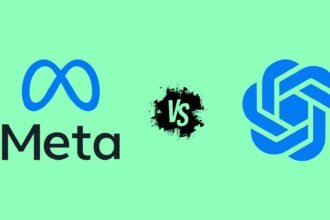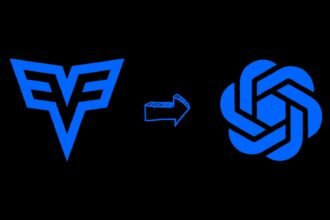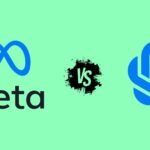SafeAssign is a key feature of the Blackboard learning system, designed to detect plagiarism in students’ work. It compares submissions against a wide range of sources, such as online materials, academic databases, and its own collection of student papers, to uphold academic honesty.
The tool provides detailed reports on similarities and potential plagiarism cases, helping educators maintain academic standards.
ChatGPT, on the other hand, is a state-of-the-art language model from OpenAI. It’s known for creating text that closely resembles human writing. Its versatility makes it useful in various areas, including content creation, customer support, and even programming assistance.
Does SafeAssign Detect ChatGPT?
Currently, SafeAssign struggles to detect content created by AI models like ChatGPT. This is because AI-generated text, unlike typical plagiarism, doesn’t directly copy existing texts in SafeAssign’s database.
The content from AI models like ChatGPT is usually unique and nuanced, lacking exact textual matches, which makes it hard for SafeAssign’s traditional detection methods to catch.
While SafeAssign is good at finding conventional plagiarism, it might not have the advanced features needed to spot the subtle characteristics of AI-generated content. This can lead to false positives or negatives when identifying plagiarized content.
To overcome this, SafeAssign would need to incorporate advanced machine learning techniques specifically designed to recognize AI-generated text. Additionally, regularly updating its database to include such content can improve SafeAssign’s ability to accurately detect AI-generated material.
How SafeAssign Detects Plagiarism
SafeAssign works by using an advanced algorithm to find exact and partial matches between a student’s work and its vast database. This database includes academic papers, a comprehensive index of internet content, and a collection of documents from institutions.

After analyzing a submission, SafeAssign generates an Originality Report. This report shows the percentage of the submission that matches other sources, helping educators determine if the content is original or potentially plagiarized.
However, the effectiveness of SafeAssign depends on factors like the size of its database, its ability to understand context, and the precision of its matching algorithms.
Challenges in Detecting AI-Generated Content with SafeAssign
SafeAssign faces considerable challenges in pinpointing content created by advanced AI models like ChatGPT. While it’s proficient with a vast database for detecting traditional plagiarism, the unique nature of AI-generated text presents complex obstacles. Key difficulties include:
- Advanced Paraphrasing by AI: AI models are skilled in rephrasing content, crafting text significantly different from the source material. SafeAssign, designed to spot direct matches, may not effectively track these cleverly altered texts.
- Contextual Analysis Limitations: Grasping the subtle nuances in AI-generated text demands deep contextual understanding, a capability that may exceed SafeAssign’s current scope, leading to potential inaccuracies in recognizing plagiarized content.
- Keeping Up with Rapid AI Advancements: AI technology evolves swiftly. For SafeAssign to remain effective, its algorithms and databases must continuously evolve, a demanding task.
- Reliance on a Comprehensive Database: SafeAssign’s effectiveness heavily relies on its database’s size and how frequently it’s updated. Any lapses in the database can result in missed instances of plagiarism.
Instances Where SafeAssign Might Flag ChatGPT Content
Despite the hurdles, there are situations where SafeAssign might still identify AI-generated content:
- Detecting Paraphrased Content: SafeAssign might recognize similarities between a student’s work and known sources based on sentence structure, word choice, and style, potentially flagging heavily paraphrased content, even if it’s AI-generated.
- Inconsistent Writing Style: If a document exhibits abrupt changes in style, vocabulary, or tone, SafeAssign might take notice. While not definitive proof of AI use, such inconsistencies can prompt a closer examination.
Limitations of SafeAssign in Recognizing AI-Generated Text
Despite some detection abilities, SafeAssign’s capability to identify AI-generated content is inherently limited:
1. Original Content Creation by AI: AI models can produce entirely new content, avoiding traditional plagiarism markers. This originality poses a significant challenge to SafeAssign’s usual detection methods.
2. Constraints of Current Algorithms: SafeAssign’s existing algorithms might not be adept at recognizing the intricate patterns characteristic of AI-generated text, leading to potential detection gaps.
3. Necessity for Advanced Detection Methods: To effectively spot AI-generated content, SafeAssign needs to integrate sophisticated machine learning algorithms and consistently update its database with examples of such content. This would ensure a more robust and adaptive detection framework.
Conclusion
In the evolving landscape of digital content creation, the interaction between advanced tools like ChatGPT and plagiarism detection systems such as SafeAssign presents complex challenges.
While SafeAssign is a robust tool for identifying copied content by comparing submissions against a vast database, its capability to detect AI-generated content remains limited. AI’s proficiency in creating unique, context-aware text requires SafeAssign and similar tools to adapt and innovate.
This includes integrating advanced detection methods and continually updating databases with AI-generated samples.
As the technology behind AI and plagiarism detection advances, the effectiveness of these tools in maintaining academic integrity in the face of AI-generated content will hinge on their ability to evolve and address these nuanced challenges.









